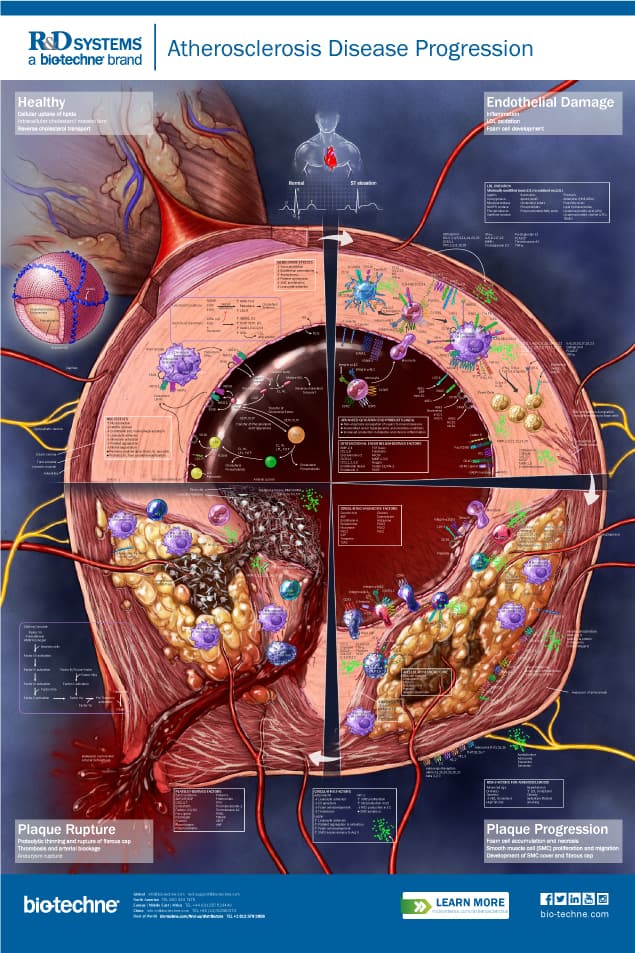Blood Coagulation Pathway and Resources
The blood coagulation cascade is a complex and tightly regulated system that can either promote or inhibit clot formation. Maintaining the correct balance is vitally important. Ineffective coagulation (as in hemophilia) carries the risk of bleeding to death, while overactive coagulation results in blockage of blood vessels and tissue damage (as in atherosclerosis and stroke).
If your work involves the coagulation cascade or if you just want to learn about it, look through our Blood Coagulation interactive pathway. Clicking on the molecule links will take you to our premium quality reagents and assays related to that molecule. For more information you can also visit our coagulation resources web page and our data page that describes the bioactivity of our recombinant proteins in the cascade.
In normal conditions (hemostasis), inhibitory factors keep the coagulation cascade in check so blood can continue to flow. Upon triggering either the extrinsic or intrinsic pathways, however, activation of the coagulation cascade rapidly leads to clot formation and sealing of the blood vessel.
Many components of the coagulation cascade are produced in the liver and circulate in the bloodstream, while others are released during platelet activation. Don’t miss our collection of 9 interactive pathways to learn more about platelets. This includes dozens of pro- and anti-coagulant molecules expelled by platelets during granule release. Clicking on the blue tabs at the left side will take you from one pathway to another.
For additional information, please visit these related links on our website:
- Coagulation research area - topic-oriented organization of our relevant products
- Platelet resources - platelet-related products, literature, protocols, and troubleshooting guides
- Platelets research area - topic-oriented organization of our relevant products
- Atherosclerosis Disease Progression poster – lipid metabolism, LDL oxidation, inflammation, plaque formation, and thrombosis


